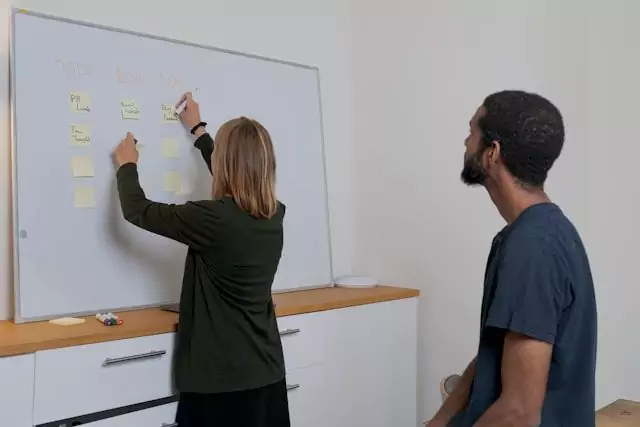When it comes to ensuring that your future projects run smoothly then it is critical to document lessons learned from previous project management mistakes. An approach that is well structured and, importantly, planned into the schedule, will allow your team to reflect on any mistakes that have occurred, identify ways in which improvements can be made and apply the knowledge gained from these mistakes to prevent them repeating the same mistakes in the future.
Why is it important to document lessons learned?
Mistakes made during the course of any project can lead to delays, project overruns, and dissatisfaction amongst your stakeholders. Rather than viewing these mistakes as a failure it is essential to consider them a valuable lesson that can help you with potential future projects. Learning these valuable lessons is one of the best ways to refine your processes, your decision making and also have an impact on how you execute future projects. When you make sure that you document the lessons that you have learned from a project, then you can ensure that the organisation and future project teams benefit from any insights that you have gained. And remember these are lessons learned from both mistakes and successes. This makes continuous improvement a embedded part of your project management culture.
Establishing a lessons learned framework
If you are going to systematically document the lessons that you have learned over the course of a project, then it is important, that as an organisation, you implement a structured framework. A Lessons Learned Report should typically include:
- Project overview – This should be a summary of the project and needs to include information on the objectives of the project as well as its scope and any associated timelines.
- Key mistakes identified – this should be a detailed account of any of the errors that you made during the project and also any challenges that your project team might have encountered during the project execution.
- Lessons learned – For every mistake that you made, or challenge that you encountered, you should make detailed notes of the insights that this helped you to gain.
- Recommended actions – this final step should detail any steps that you should take to prevent or mitigate similar mistakes from occurring in any future projects.
A formal review process will help to ensure that any lessons learned are not forgotten but are actively applied to new initiatives. Without a more formal written framework where you record all of this information it is easier to remember that you have encountered a similar issue before.

Step-by-step process for documentation
Having a step-by-step process for your documentation will ensure that all of the relevant details are documented, and nothing is forgotten.
Conduct a post-project review
- Hold a lessons learned meeting – This will allow project stakeholders to discuss what went well and what went wrong with the project.
- Encourage open feedback – Feedback should be open and honest and help to foster a learning environment that is constructive.
- Gather insights – Use surveys or feedback forms to help gather insights from all those who were involved in the project.
Categorise mistakes and lessons
- Process errors – This should be any issues in the planning, scheduling, or resources allocation parts of the project.
- Communication failures – Communication is essential to the success of any project. So make sure that you document any misalignment between stakeholders, any unclear expectations and any lack of documentation.
- Technical challenges – This includes documenting things like issues with integration, software failures or incorrect requirements.
- Team dynamics – This might be a lack of collaboration, skills gaps that made completing the work difficult, or leadership missteps.
Document every mistake and the impact it had
- What went wrong – Clearly define what went wrong and the impact it had on the success of the project
- Provide examples – examples should be specific rather than vague to help in the future
- Quantify impacts – all impacts should be quantified including those relating to delays, cost increases, and reputational damage, where possible.
Identify corrective actions
- Make suggestions – these should include concrete steps to help rectify any mistakes in future projects.
- Assign responsibility – you should define responsibility for implementation of any lessons learned.
- Create a timeline – establish a timeline for process improvements.
Store and share documentation
You should use a centralised repository, or shared folder that is accessible to all members of the team. You should also ensure that you provide access to all key stakeholders. All of the information should be available in case it is needed for reference in future projects.
What types of documentation should you keep?
In addition to all of the formal documentation that we have mentioned above, and detailed reports on the relevant aspects of the project, it can also be a good idea to record your own personal reflections on the project.
These personal reflections can be less formal than the lessons learned on the project. They can take a format that may be more personalised to each individual but are no less valuable. This includes using a journal, a vlog or even a blog to record your own thoughts and reflections. Choose an option that works for you. Keeping your own reflections on a project can allow you to remember certain things in the future.
To sum up…
Whilst mistakes are frustrating they are a valuable learning opportunity, as long as they are documented properly and applied. When you systematically make the effort to record those lessons, the project team will create a culture of improvement. This will make future projects not only more efficient, but also more successful.